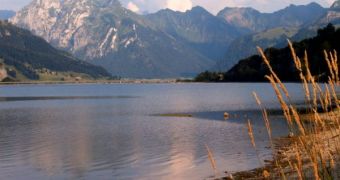Switzerland is famous around the world for its large number of pristine lakes, which look as if they have never been touched by human hands. Even the landscape around is so beautiful that it makes anyone visiting the regions assume that the water in the lakes couldn't be anything else than 100 percent pure stuff. But scientific studies have shown that the water moving around in the country, namely that escaping from water-treatment plants, can make its way into rivers and lakes, though admittedly it's clean.
For the last decades, the Swiss have used a fairly clever system of assessing the purity of their drinking water. They have analyzed lakes and rivers in various parts of the country, searching for caffeine. Their line of reasoning has been very simple – people consume a lot of coffee and tea, and the largest amount of caffeine is destroyed during treatment. If the substance was discovered in lakes, it would mean that a problem existed at a cleaning station.
Expanding on this simple logic, the researchers have now moved to using artificial sweeteners for the tracking job. The main reason behind the “switch” is the fact that these substances manage to get through treatment stations relatively unharmed, which means that their concentration – and, therefore, the scale of the potential problem – can also be assessed, when the substances are discovered in rivers and lakes around the country.
One of the main goals of tracking the path wasted water takes after leaving the cleaning stations is related to public health. Switzerland draws a large amount of its drinking water from mountaintop glaciers and aquifers. It stands to reason that waste water cannot travel uphill and infiltrate the glaciers, but it can move downwards, inside the aquifers. And recent studies have shown that this, indeed, happens.
Traces of acesulfame potassium, one of the four types of artificial sweeteners that were purposefully dropped in the water, were found to linger even inside deep aquifers, which means that waste water basically goes anywhere. Researchers estimate that approximately 10 to 20 percent of all water that infiltrates the country's aquifers comes from waste-treatment plants, NewScientist reports.

 14 DAY TRIAL //
14 DAY TRIAL //